Easy Backyard Strawberry Growing – imagine stepping outside your back door and plucking a sun-ripened, juicy strawberry straight from the vine. Sounds like a dream, right? Well, it doesn’t have to be! For centuries, strawberries have been cherished not only for their delicious taste but also for their vibrant color and the joy they bring to gardens worldwide. From ancient Roman gardens to the strawberry fields of California, these little red gems have captured hearts and palates alike.
But let’s be honest, the thought of growing your own strawberries can sometimes feel a bit daunting. Maybe you’ve tried before and ended up with more slugs than strawberries, or perhaps you simply don’t know where to start. That’s where this DIY guide comes in! I’m here to share some simple, effective, and, yes, easy backyard strawberry growing tricks that will transform your garden into a berry-lover’s paradise.
Why do you need these tricks? Because store-bought strawberries, while convenient, often lack the intense flavor and sweetness of homegrown berries. Plus, there’s nothing quite like the satisfaction of nurturing your own food from seed (or seedling!) to table. So, ditch the supermarket berries and get ready to embark on a fun and rewarding gardening adventure. Let’s unlock the secrets to a bountiful strawberry harvest right in your own backyard!
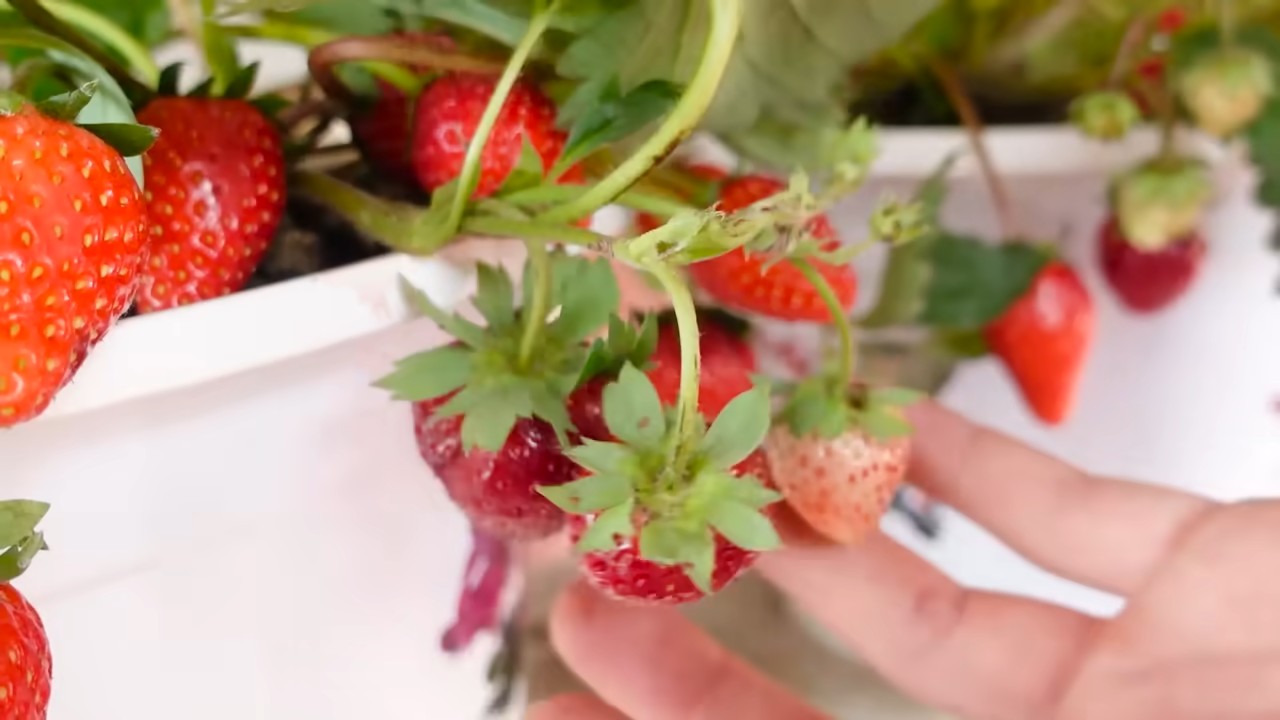
Growing Strawberries in Your Own Garden: A Simple DIY Guide
Hello garden friends! I love strawberries, and what could be better than picking them directly from your own garden? It’s easier than you think, and I’ll show you how to create your own strawberry oasis with a few simple steps. Don’t worry, even if you don’t have a green thumb, we can do this!
What You Need: The Preparation
Before we get started, we obviously need the right equipment. Here is a list so you have everything at hand:
- Strawberry plants: Choose robust varieties that are suitable for your climate. It’s best to ask at your local nursery.
- Garden soil: Good, nutrient-rich soil is essential. You can also buy special strawberry soil.
- Compost or organic fertilizer: For an extra nutrient kick.
- Planters (optional): If you don’t have a garden, you can also grow strawberries in pots or boxes.
- Watering can or garden hose: For watering.
- Mulch (straw, wood chips, or similar): Helps to retain moisture and suppress weeds.
- Gardening gloves: To keep your hands clean.
- A small shovel or trowel: For digging the planting holes.
- (Optional) Bird netting: If you want to prevent your feathered friends from nibbling away at your harvest.
Step-by-Step Guide: How to Plant Your Strawberries
Now let’s get down to business! Follow these steps, and you’ll soon be harvesting your own strawberries.
- Choose the right location: Strawberries love the sun! Choose a spot in your garden that gets at least 6-8 hours of sunlight per day. A sunny location is crucial for a bountiful harvest.
- Prepare the soil: Strawberries like loose, well-draining soil. Dig up the soil where you want to plant, removing stones and weeds. Mix compost or organic fertilizer into the soil to enrich it with nutrients. This is like a little wellness program for your future strawberry plants!
- Prepare the strawberry plants: Before placing the plants in the ground, briefly dip the roots in water. This helps them adapt better to their new location.
- Planting: Dig holes large enough to accommodate the root balls of the strawberry plants. The distance between plants should be about 20-30 cm (8-12 inches) so they have enough space to grow. Plant them so that the roots are well-covered, but the heart of the plant (the point where the leaves emerge from the ground) is not below the soil.
- Watering: Water the freshly planted strawberries thoroughly. This helps to settle the soil around the roots.
- Mulching: Spread a layer of mulch (straw, wood chips, or similar) around the strawberry plants. This keeps the soil moist, suppresses weeds, and protects the fruit from dirt.
The Care: How to Keep Your Strawberries Happy
After planting comes care! To ensure your strawberries thrive, you should consider the following points:
- Regular watering: Strawberries need regular water, especially during the flowering and fruiting periods. Make sure the soil is always slightly moist, but not too wet. Avoid watering the leaves, as this can promote fungal diseases.
- Fertilizing: Fertilize your strawberries regularly with an organic fertilizer or a special strawberry fertilizer. Follow the instructions on the packaging.
- Remove weeds: Keep the area around the strawberry plants free of weeds. Weeds compete with strawberries for nutrients and water.
- Remove runners: Strawberries form runners, which are long shoots that produce new plants. If you want a rich harvest, you should regularly remove the runners so that the mother plant can put its energy into fruit production. However, if you want to propagate new plants, you can let some runners take root.
- Protection from pests and diseases: Strawberries can be affected by various pests and diseases. Watch for signs like aphids, slugs, or fungal infections. If necessary, you can use organic pesticides or fungicides. Bird netting can help protect the fruit from birds.
The Harvest: The Reward for Your Efforts
Finally, the time has come! The strawberries are ripe and ready for snacking.
- When to harvest? Strawberries are ripe when they are deep red and slightly soft. They should detach easily from the stem.
- How to harvest? Pick the strawberries carefully so you don’t damage the plants. Cut the stem with scissors or a knife instead of pulling the fruit off.
- How to store? Strawberries are delicate and are best eaten immediately. If you need to store them, keep them unwashed in the refrigerator.
Growing Strawberries in a Pot: An Alternative for Balconies and Patios
No garden? No problem! Strawberries can also be grown wonderfully in pots or boxes on a balcony or patio.
- Choose the right containers: Select pots or boxes with sufficient volume (at least 15-20 liters per plant) and good drainage.
- Prepare the soil: Use special strawberry soil or mix garden soil with compost.
- Planting: Plant the strawberries in the pots or boxes as described above.
- Care: Ensure regular watering and fertilizing. Since soil in pots dries out faster than in the garden, you may need to water more often.
- Location: Place the pots or boxes in a sunny spot.
Variety Recommendations: Which Strawberry is Right for You?
There are countless strawberry varieties, each with its own advantages. Here are a few recommendations:
- ‘Elsanta’: A very popular variety with large, aromatic fruits. It is robust and high-yielding.
- ‘Korona’: An early variety with sweet, juicy fruits. It is ideal for growing in a pot.
- ‘Hummi Praline’: An everbearing variety that produces fruit all summer long. It’s perfect for anyone who can’t get enough of strawberries.
- ‘Mieze Schindler’: An old variety with a unique, slightly tart flavor. It is not as high-yielding as other varieties, but its aroma is incomparable.
Avoiding Common Mistakes: Tips for a Successful Harvest
Mistakes can happen even when growing strawberries. Here are a few tips to avoid them:
Neglecting weeds: Weeds compete with the strawberries.
Not enough sun: Strawberries need a lot of sun to grow well and produce fruit. Make sure they get at least 6-8 hours of sunlight per day.
Incorrect watering: Too much or too little water can be harmful. Water regularly, but avoid waterlogging.
Lack of fertilizer: Strawberries need nutrients to grow well and produce fruit. Fertilize them regularly with an organic fertilizer or a special strawberry fertilizer.
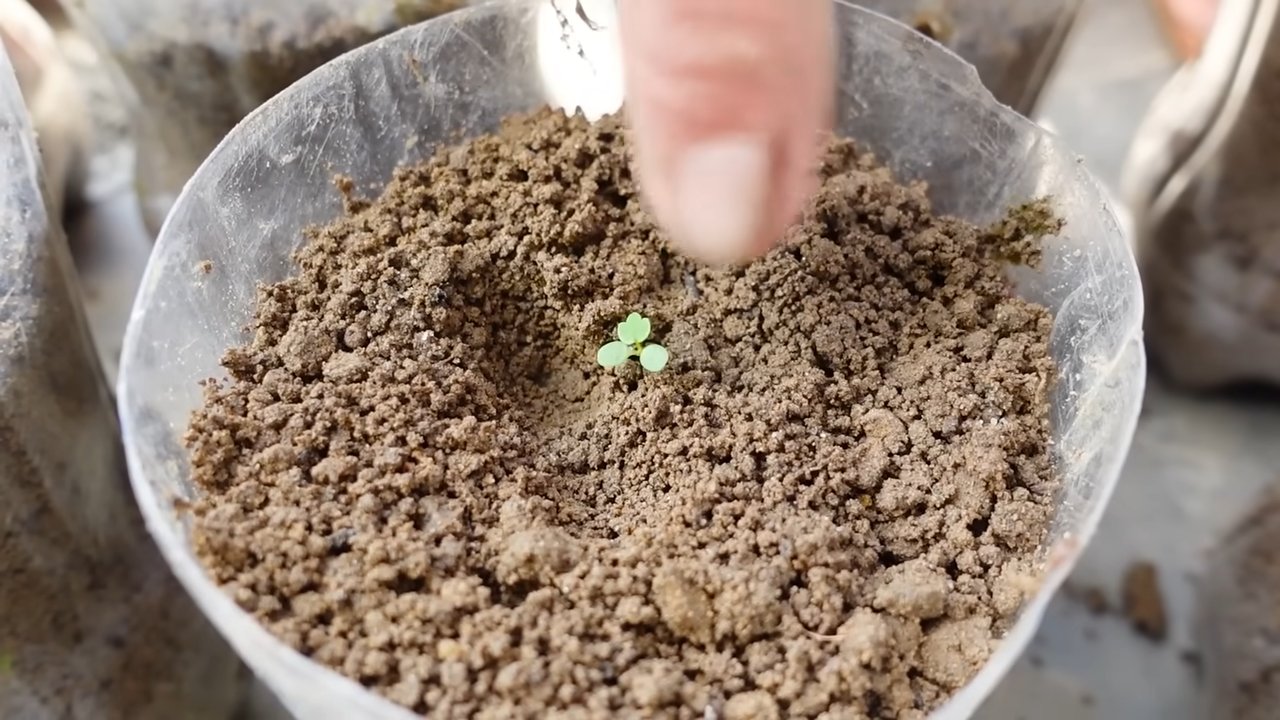
Conclusion
So, there you have it! Transforming your backyard into a thriving strawberry patch is not only achievable but also incredibly rewarding. This easy backyard strawberry growing method unlocks a world of fresh, flavorful berries right at your fingertips, far surpassing anything you can find at the grocery store. Imagine the sweet aroma filling your garden, the vibrant red jewels beckoning you closer, and the unparalleled taste of sun-ripened strawberries picked just moments before being enjoyed.
This isn’t just about growing strawberries; it’s about creating an experience. It’s about connecting with nature, teaching your children about where their food comes from, and enjoying the simple pleasures of life. Plus, you’ll be reducing your carbon footprint by cutting down on transportation and packaging waste.
But the best part? This method is incredibly adaptable. Want to try different varieties? Go for it! Experiment with everbearing strawberries for a continuous harvest throughout the season, or try alpine strawberries for a unique, intensely flavored treat. Consider companion planting with herbs like basil or thyme to deter pests and enhance the flavor of your berries. You can even incorporate vertical gardening techniques to maximize space and create a stunning visual display.
Don’t be afraid to get creative and personalize your strawberry patch to suit your own tastes and preferences. The possibilities are endless!
We’ve provided you with the tools and knowledge to embark on this exciting journey. Now, it’s your turn to get your hands dirty and experience the joy of growing your own strawberries. We are confident that you will find this easy backyard strawberry growing method to be a fulfilling and delicious endeavor.
We encourage you to take the plunge and start planning your strawberry patch today. And once you’ve harvested your first batch of juicy, homegrown strawberries, we’d love to hear about your experience! Share your photos, tips, and stories with us in the comments below. Let’s build a community of strawberry enthusiasts and inspire others to discover the magic of growing their own food. Happy gardening!
Frequently Asked Questions (FAQ)
Q: What is the best time of year to plant strawberries?
A: The ideal time to plant strawberries depends on your climate and the type of strawberries you’re planting. In general, early spring or late fall are the best times. Spring planting allows the plants to establish themselves before the heat of summer, while fall planting gives them a head start for the following spring. For June-bearing strawberries, plant in early spring. For everbearing and day-neutral varieties, you can plant in either spring or fall. Consider your local climate and consult with your local nursery for specific recommendations.
Q: What kind of soil is best for growing strawberries?
A: Strawberries thrive in well-drained, slightly acidic soil with a pH between 5.5 and 6.5. The soil should be rich in organic matter. Before planting, amend your soil with compost, aged manure, or other organic materials to improve drainage and fertility. Avoid heavy clay soils, as they can retain too much water and lead to root rot. If you have clay soil, consider planting in raised beds or containers.
Q: How much sunlight do strawberries need?
A: Strawberries need at least six to eight hours of direct sunlight per day to produce a good crop of berries. Choose a location in your backyard that receives plenty of sunlight throughout the day. If you live in a hot climate, some afternoon shade can be beneficial to prevent the plants from overheating.
Q: How often should I water my strawberry plants?
A: Strawberries need consistent moisture, especially during fruit development. Water deeply and regularly, especially during dry periods. Aim to keep the soil consistently moist but not waterlogged. Avoid overhead watering, as this can promote fungal diseases. Drip irrigation or soaker hoses are the best way to water strawberries, as they deliver water directly to the roots.
Q: What are some common pests and diseases that affect strawberries?
A: Common pests that affect strawberries include slugs, snails, aphids, spider mites, and strawberry root weevils. Common diseases include gray mold (Botrytis), leaf spot, and root rot. To prevent pests and diseases, practice good garden hygiene, such as removing dead leaves and debris, and providing good air circulation. Use organic pest control methods, such as insecticidal soap or neem oil, to control pests. Choose disease-resistant varieties of strawberries.
Q: How do I fertilize my strawberry plants?
A: Fertilize your strawberry plants in early spring, before they start to bloom, and again after the first harvest. Use a balanced fertilizer that is specifically formulated for berries. Avoid over-fertilizing, as this can lead to excessive foliage growth and reduced fruit production. Organic fertilizers, such as compost tea or fish emulsion, are also a good option.
Q: How do I prune my strawberry plants?
A: Pruning strawberries helps to maintain their health and productivity. After the harvest, remove any dead or diseased leaves. For June-bearing strawberries, remove the runners (the long stems that grow out from the plant) to encourage the plant to focus its energy on fruit production. For everbearing and day-neutral strawberries, you can remove some of the runners, but leave a few to propagate new plants.
Q: How long does it take for strawberries to produce fruit?
A: The time it takes for strawberries to produce fruit depends on the variety and the planting time. June-bearing strawberries typically produce fruit in the second year after planting. Everbearing and day-neutral strawberries can produce fruit in the first year, but the yield may be smaller.
Q: Can I grow strawberries in containers?
A: Yes, strawberries grow very well in containers. Choose a container that is at least 12 inches deep and wide. Use a well-draining potting mix and provide regular watering and fertilization. Container-grown strawberries may need to be watered more frequently than those grown in the ground.
Q: How do I protect my strawberries from birds?
A: Birds love to eat strawberries, so it’s important to protect your plants. The most effective way to protect strawberries from birds is to cover them with netting. You can also use bird netting or reflective tape to deter birds.
Q: What are some good companion plants for strawberries?
A: Companion planting can help to improve the health and productivity of your strawberry plants. Good companion plants for strawberries include basil, thyme, borage, marigolds, and onions. These plants can help to deter pests, attract beneficial insects, and improve the flavor of your strawberries.
Q: How do I overwinter my strawberry plants?
A: In cold climates, it’s important to protect your strawberry plants from freezing temperatures. After the first frost, cover your plants with a layer of straw or mulch. This will help to insulate the roots and protect them from the cold. In the spring, remove the mulch as soon as the weather warms up.
Q: What if my strawberries are small and not very flavorful?
A: Small and not very flavorful strawberries can be caused by several factors, including insufficient sunlight, poor soil, lack of water, or over-fertilization. Make sure your plants are getting at least six to eight hours of direct sunlight per day. Amend your soil with compost or other organic matter to improve its fertility. Water your plants regularly, especially during dry periods. Avoid over-fertilizing, as this can lead to excessive foliage growth and reduced fruit production. Also, ensure you’re harvesting the strawberries when they are fully ripe.
Q: How do I know when my strawberries are ripe?
A: Strawberries are ripe when they are fully red and slightly soft to the touch. They should also have a sweet aroma. Gently pull the strawberry from the plant, leaving the green cap attached.

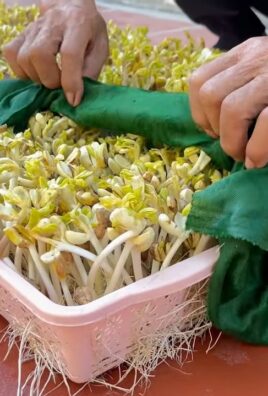
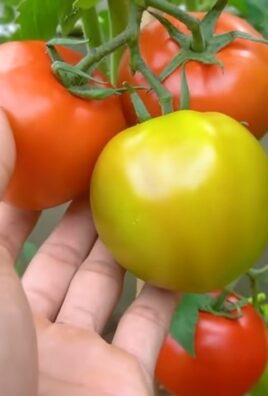
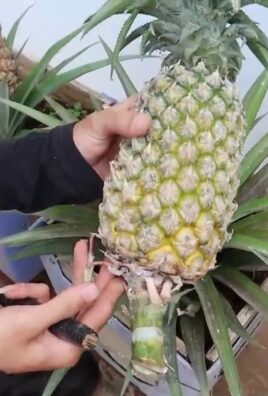
Leave a Comment